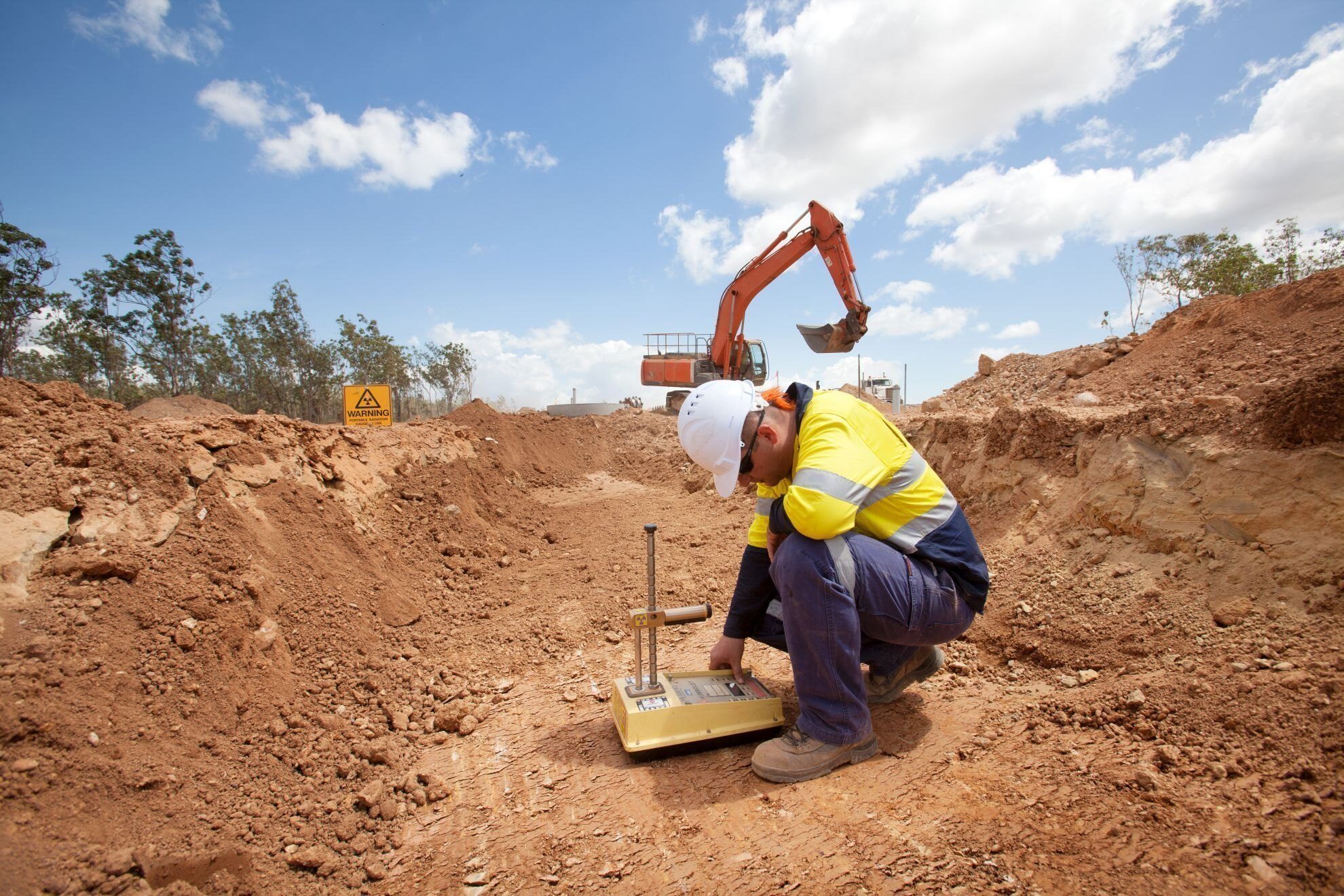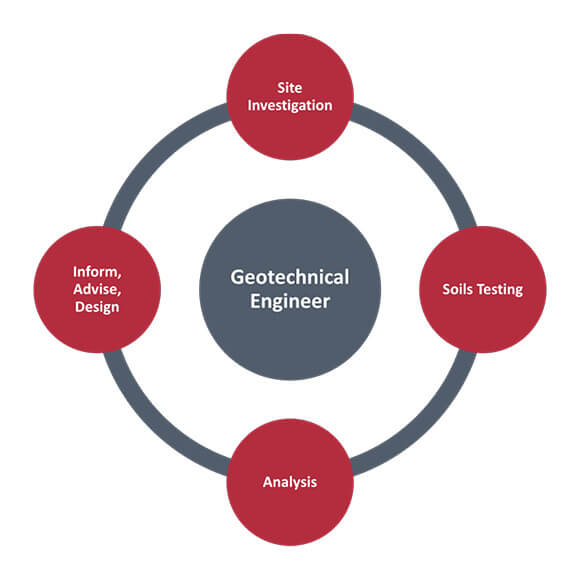Some Known Details About Specialized Geotechnical Engineering Solutions
Some Known Details About Specialized Geotechnical Engineering Solutions
Blog Article
Some Ideas on Specialized Geotechnical Engineering Solutions You Need To Know
Table of ContentsThe Specialized Geotechnical Engineering Solutions PDFsThe Definitive Guide for Specialized Geotechnical Engineering SolutionsLittle Known Questions About Specialized Geotechnical Engineering Solutions.Little Known Questions About Specialized Geotechnical Engineering Solutions.The 2-Minute Rule for Specialized Geotechnical Engineering SolutionsTop Guidelines Of Specialized Geotechnical Engineering Solutions
William Rankine, a designer and physicist, established an alternate to Coulomb's planet pressure theory. Albert Atterberg created the clay uniformity indices that are still used today for dirt category. In 1885, Osborne Reynolds recognized that shearing reasons volumetric expansion of dense products and contraction of loosened granular materials. Modern geotechnical design is stated to have started in 1925 with the publication of Erdbaumechanik by Karl von Terzaghi, a mechanical designer and geologist. Terzaghi also created the framework for concepts of bearing capacity of foundations, and the concept for prediction of the price of settlement of clay layers due to consolidation. Afterwards, Maurice Biot totally created the three-dimensional soil loan consolidation theory, expanding the one-dimensional design previously created by Terzaghi to much more basic hypotheses and presenting the set of fundamental formulas of Poroelasticity.
Geotechnical engineers examine and establish the residential or commercial properties of subsurface conditions and materials.
10 Easy Facts About Specialized Geotechnical Engineering Solutions Explained
Geologic mapping and interpretation of geomorphology are generally completed in consultation with a rock hound or design geologist. Subsurface exploration generally includes in-situ testing (as an example, the common penetration test and cone infiltration test). The excavating of examination pits and trenching (particularly for situating mistakes and slide planes) might likewise be used to learn more about soil problems at depth. Still, they are occasionally utilized to allow a rock hound or engineer to be decreased into the borehole for straight aesthetic and hand-operated assessment of the soil and rock stratigraphy. Numerous soil samplers exist to satisfy the needs of various engineering jobs. The basic infiltration test, which makes use of a thick-walled split spoon sampler, is the most typical way to gather disturbed examples.

Commonly, the user interface's specific geometry is unidentified, and a streamlined interface geometry is assumed. Finite slopes need three-dimensional versions to be analyzed, so most slopes are evaluated presuming that they are definitely vast and can be represented by two-dimensional models.
The Definitive Guide to Specialized Geotechnical Engineering Solutions

Dimension of quantities and analysis of actual problems. It is unsuitable for tasks whose style can not be altered throughout construction.
Concepts of Geotechnical article Engineering. Thomson Discovering. Budhu, Muni (2007 ). Soil Technicians and Foundations. John Wiley & Sons, Inc. . ISBN 978-0-471-43117-6. Interrupted soil buildings and geotechnical style, Schofield, Andrew N., Thomas Telford, 2006. Guerriero V., Mazzoli S. (2021 ). "Concept of Effective Stress in Soil and Rock and Ramifications for Fracturing Processes: A Review".
Specialized Geotechnical Engineering Solutions Things To Know Before You Buy
Principles and Technique of Ground Enhancement. Ground Enhancement Concepts And Applications In Asia. Style analysis in rock technicians.
Cengage Discovering, Stamford, 666 p. Atkinson, J., 2007. The mechanics of dirts and foundations. The Observational Technique in ground engineering concepts and applications.
Examine This Report on Specialized Geotechnical Engineering Solutions
These reports are tailored to meet the certain demands of a project and include style criteria and advice for the building of a variety of man-made structures. As well as supplying working as a consultant solutions covering locations such as incline security and load-bearing abilities for different materials, these engineers embark on r & d tasks to boost methodologies, equipment, materials knowledge and analysis covering entire lifecycles (Specialized Geotechnical Engineering Solutions).
Engineering the buildings and technicians of rocks consisting of the application of dynamics, fluid mechanics, kinematics and material auto mechanics. This unites geology, soil and rock mechanics, and structural engineering for the layout and construction of structures for a series of civil engineering projects. This area entails anticipating the performance of structure dirt and rock to a load enforced by a framework, while thinking about performance, economic situation and safety and security.
Nevertheless, rates of pay generally raise as your understanding and skills expand, with guidelines indicating a graduate beginning income Website of in between 18,000 and 28,000 annually in the UK. This rises to 26,000 to 36,000 with a few years of experience and afterwards reaching 40,000 to 60,000+ for elderly, chartered or master designers.
The Only Guide for Specialized Geotechnical Engineering Solutions
With the appropriate application it is feasible to master the occupation and gain entrance to a tough yet rewarding and essential job. A geologist would certainly need to retrain to come to be a geotechnical designer, although there is a lot of cross-over in between both careers, which could make this simpler. Geologists need to have an understanding of soils, rocks and various other products from a scientific point of view, while geotechnical engineers story their knowledge of issues such as dirt and rock technician, geophysics and hydrology and apply them to engineering and ecological jobs.
When starting, these engineers will often tend to work with less complex projects, accumulating expertise and experience prepared for more difficult job later on. Geotechnical engineers often tend to specialise in details locations as they expand in experience, concentrating on specific infrastructures such as trains, roads or water. These engineers additionally collaborate with renewable resource, offshore and onshore oil and gas, nuclear power, and visite site a lot more.
Report this page